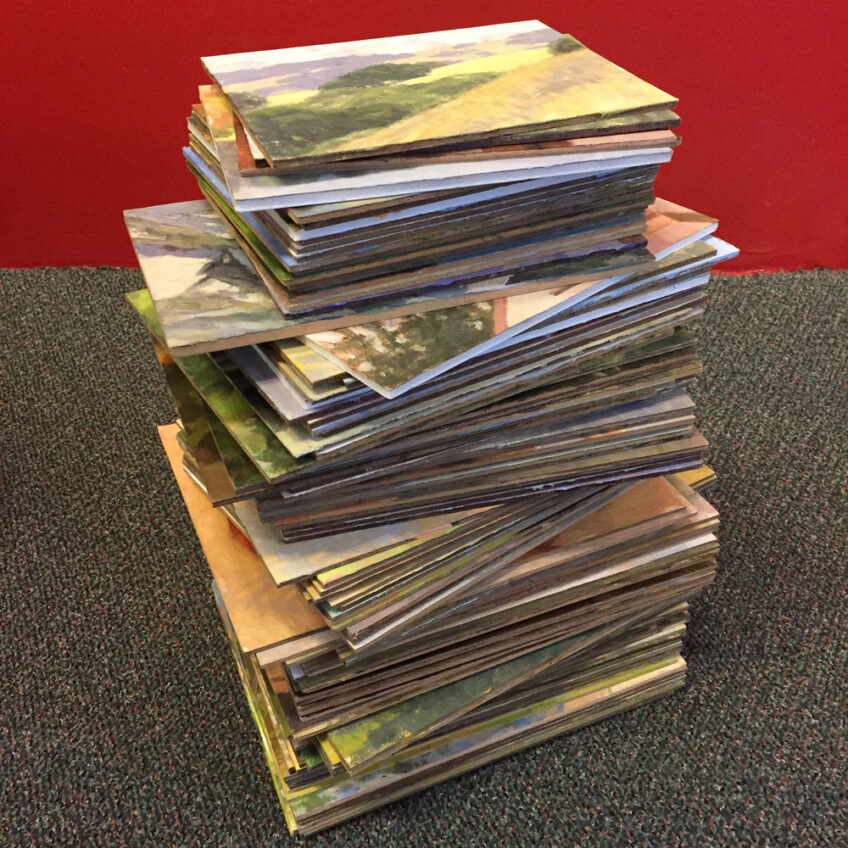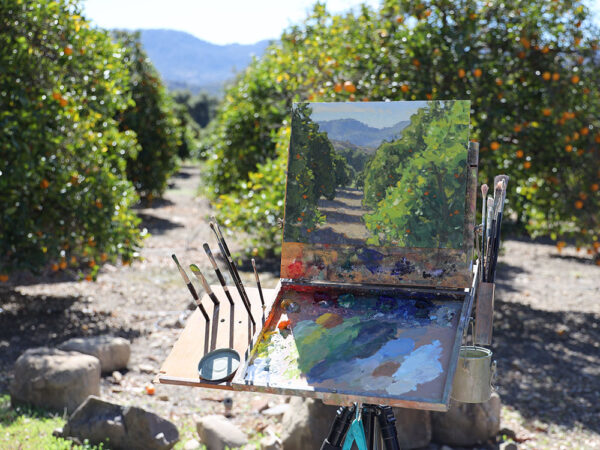Painting can get complicated fast. So many concepts to think about at one time. Composition, perspective, proportion, shape, line quality, contrast, palette colors, color temperature, color saturation, complementary colors, tinting strength, underpainting, brush size, paint viscosity, light source, canvas type, surface texture, edge quality, brush handling, glazing, etc.
Despite that long list, there is a simple key for making better paintings. Just one thing to focus on.
The Key for Making Better Paintings:
Practice copying what you see. Regularly.
Maybe you thought it was going to be something more exciting. But very few of us can excel without regular practice. Nothing to be ashamed of here, we just have to put in the work.
Once you reach 1,000 paintings you’re off to a good start. (Yikes!) All of that repetition sorts out much of what’s in the above list, by the way.
How to Improve:
Improving your ability to copy what you see means working through a process to train your eyes to see more accurately. Yes, it’s true, you just don’t see everything quite right. (Something your family and friends may have been telling you for years.)
I think our eyes need training in two main areas:
1. Drawing Accuracy
Faithful measuring can greatly improve your drawing accuracy over time.
2. Color Recognition
Color recognition can be developed by regularly painting from life. (Still life, plein air landscape, portrait, figure.) Do your best to take the time necessary to mix your colors to match what you see. Go past the “oh, it’s close enough” stage and really try to match your colors.
As you practice the above two areas, work hard to identify problems you encounter. Ask yourself: “Why doesn’t my drawing match what I see?” (Wrong perspective, incorrect distance between shapes, faulty angles, etc.) “What is different about the color I’ve mixed compared to the color in my subject?” (Too light or dark, too intense or dull, too warm or cool?) Then take time to correct those mistakes.
No matter what style of painting you’re pursuing, this simple key can guide you. Once you can confidently copy what you see, you’ll have a strong foundation from which to take your paintings in any direction. And your family and friends will have one less thing to criticize!


5 Responses
Debbie Mattison
So true. It really comes down to patience and taking the time to make it right the first time. I still sometimes fall into the “oh, it’s close enough” trap. I also think that the more we look at color and value the better we see it. I know I see more color within my greens and shadows than I used to. Thanks for you post, I will think about it as I paint today.
Sue Johnson
Thank you Dan for these truths. Love the challenges of doing this.
Joann Douk
I absolutely agree. The initial measurements are crucial. Granted, you can change anything you want…but when I paint what I really see…I’m transplanted to that moment.
Greg Autry
Thanks Dan. Always interesting and informative.
Let’s do a workshop
Greg Autry
Sally Francis Ladd
It’s “slo-art” to me, actually taking time for each creative step means your brain gets a chance to translate from eye to hand. Like slo food, the artist has time to refine the 1 step at a time, rather than hurry, adjust, hurry and fix that often leads me to a muddled mess! Thanks Dan- a thoughtful, excellent instructor of making fine art.